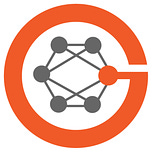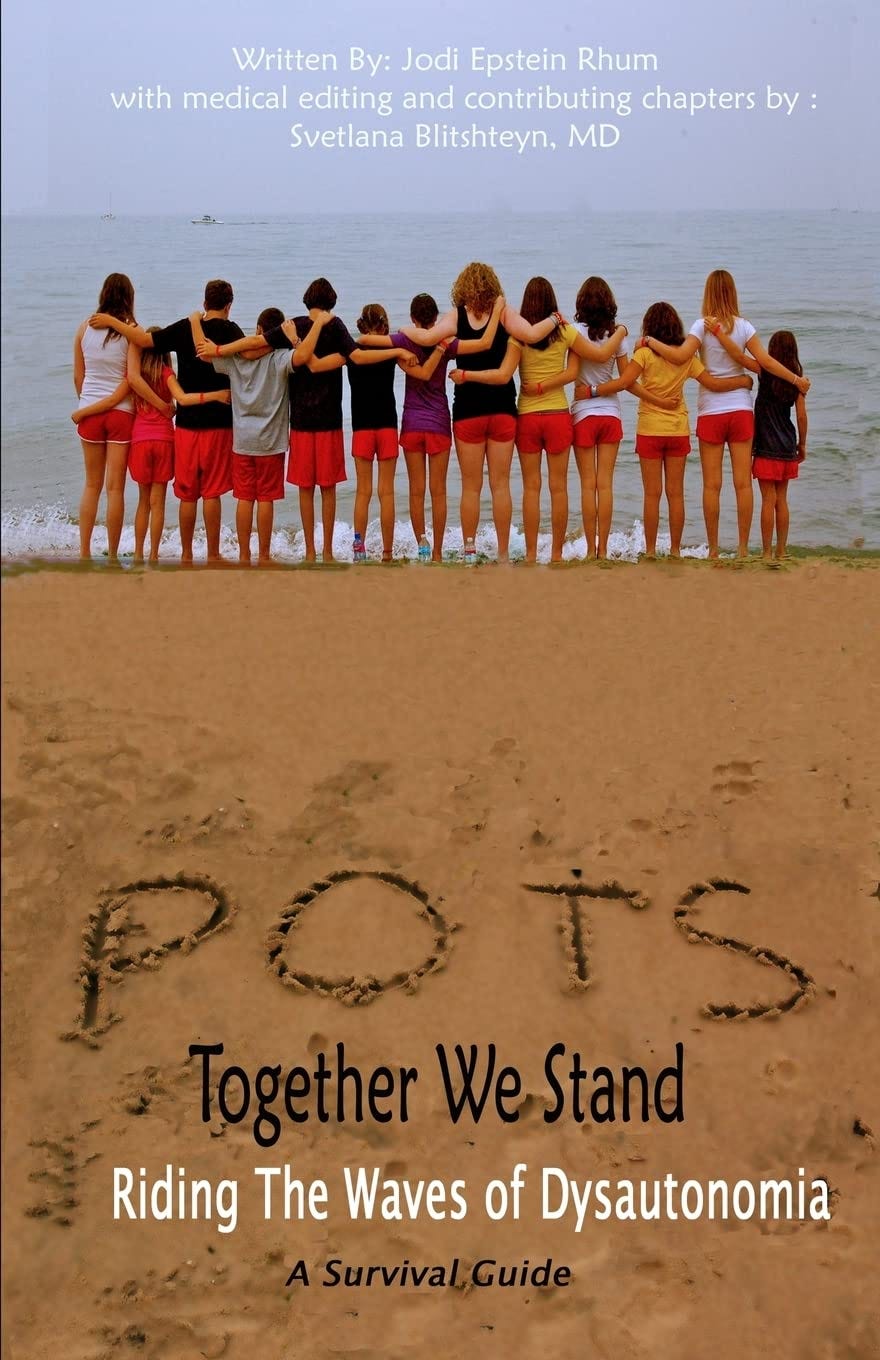After finishing her training in neurology at Mayo Clinic, Dr. Svetlana Blitshteyn started a Dysautonomia Clinic in 2009. Little did she know what was in store many years later when Covid hit!
Ground Truths podcasts are on Apple and Spotify. The video interviews are on YouTube
Transcript with audio and external links
Eric Topol (00:07):
Well, hello, it's Eric Topol from Ground Truths, and I have with me a really great authority on dysautonomia and POTS. We will get into what that is for those who aren't following this closely. And it's Svetlana Blitshteyn who is a faculty member at University of Buffalo and a neurologist who long before there was such a thing as Covid was already onto one of the most important pathways of the body, the autonomic nervous system and how it can go off track. So welcome, Svetlana.
Svetlana Blitshteyn (00:40):
Thank you so much, Eric for having me. And I want to say it's a great honor for me to be here and just to be on the list with your other guests. It's remarkable and I'm very grateful and congratulations on being on the TIME100 Health list for influential people in 2024. And I am grateful for everything that you've done. As I mentioned earlier, I'm a big fan of your work before the pandemic and of course with Covid I followed your podcast and posts because you became the best science communicator and I'm very happy to see you being a strong advocate and thank you for everything you've done.
Eric Topol (01:27):
Well, that's so kind to you. And I think talking about getting things going before the pandemic, back in 2011, you published a book with Jodi Epstein Rhum called POTS - Together We Stand: Riding the Waves of Dysautonomia. And you probably didn't have an idea that there would be an epidemic of that more than a decade later, I guess, right?
Svetlana Blitshteyn (01:54):
Yeah, absolutely. Of course, SARS-CoV-2 is a new virus and we can technically say that Long Covid and post Covid complications could be viewed as a new entity. But practically speaking, we know that post-infectious syndromes have been happening for many decades. And so, the most common trigger for POTS happened to be infection, whether it was influenza or mononucleosis or Lyme or enterovirus. We knew this was happening. So I think it didn't take long for me and my colleagues to realize that we're going to be seeing a lot of patients with autonomic dysfunction after Covid.
On the Front Line
Eric Topol (02:40):
Well, one of the things that's important for having you on is you're in the front lines taking care of lots of patients with Long Covid and this postural orthostatic tachycardia syndrome (POTS). And I wonder if you could tell us what it's care for these patients because so many of them are incapacitated. As a cardiologist, I see of course some because of the cardiovascular aspects, but you are dealing with this on a day-to-day basis.
Svetlana Blitshteyn (03:14):
Yeah, absolutely. As early as April 2020 when everything was closed, I got a call from a young doctor in New York City saying that he had Covid and he couldn't recover, he couldn't return to the hospital. And his colleagues and cardiology attendants also had the same symptoms and the symptoms were palpitations, orthostatic intolerance, tachycardia, fatigue. Now, how he knew to contact me is that his sister was my patient with POTS before Covid pandemic. So he kind of figured this looked like my sister, let me check this out. And it didn't take long for me to have a lot of patience from the early wave. And then fairly soon, I think within months I was thinking, we have to write this up because this is important. And to some of us it was not news, but I was sure that to many physicians and public health officials, this would be something new.
Svetlana Blitshteyn (04:18):
So because I'm a busy clinician and don't have a lot of time for publications, I had to recruit a graduate student from McMasters and together we had this paper out, which was the first and largest case series on post Covid POTS and other autonomic disorders. And interestingly, even though it came out I think in 2021, by the time it was published, it became the most citable paper for me. And so I think from then on organizations and societies became interested in the work that I do because prior to that, I must say in the kind of a niche specialty was I don't think it was very popular or of interest to me.
How Did You Get Interested in Dysautonomia?
Eric Topol (05:06):
Yeah, so that's why I wanted to just take a step back with you Svetlana, because you had the foresight to be the founder and director of the Dysautonomia Clinic when a lot of people weren't in touch with this as an important entity. What prompted you as a neurologist to really zoom in on dysautonomia when you started this clinic?
Svetlana Blitshteyn (05:28):
Sure. So the reasons are how I ended up in this field is kind of a convoluted road and the reasons are many, but one, I will say that I trained at Mayo Clinic where we received very good training on autonomic disorders and EMG and coming back to returning back to Buffalo, I began working at the large multiple sclerosis clinic because Western New York has a high incidence MS. And so, what they quickly realized in that clinic is that there was a subset of women who did not qualify for the diagnostic criteria of multiple sclerosis, yet they had a lot of the same symptoms and they were certainly very disabled. Now I recognize that these women had autonomic disorders of all sorts and small fiber neuropathy, and I think this population sort of grew and eventually I realized there is no one not only in Buffalo but the entire Western New York who is doing this work.
Svetlana Blitshteyn (06:34):
So I kind of fell into that. But another reason is actually more personal that I haven’t talked about. So years ago I was traveling to Toronto, Canada for a neurology meeting to present my big study on meningioma and hormone replacement therapy using Mayo Clinic database. And so, in that year, the study received top 10 noteworthy studies of the year award from the Society of Neuro-Oncology, and it was profiled in Reuters Health. Now, on the way back from the conference, I had the flu, and when they returned I could no longer walk the same hallways of the hospital where I walked previously. And no matter how hard I try to push my body, we all do this in medicine, we push through, I just couldn’t do it. No amount of wishing or positive thinking. And so, I think that’s how I came to know personally the post-infectious syndromes. And I think it almost became a duality of experiencing this and also practicing it.
Eric Topol (07:52):
No, that’s really striking and it wasn’t so common to hear about this post flu, but certainly it changed in 2020. So how does a person with POTS typically present to you?
Clinical Presentation
Svetlana Blitshteyn (08:08):
So these are very important questions because what I want to stress is though POTS is one of the most common autonomic disorders. Even if you don’t have POTS by the diagnostic criteria, you may still have autonomic dysfunction and significant autonomic symptoms. How do they present? Well, they present like most Long Covid patients, the most common symptoms are orthostatic intolerance, fatigue, exercise intolerance, post exertional malaise, dizziness, tachycardia, brain fog. And these are common themes across the board in Long Covid patients, but also in pre-Covid post-acute infection syndrome patients. And you have to recognize because I think what I tell my colleagues is that oftentimes patients are not going to present to you saying, I have orthostatic intolerance. Many times they will say, I’m very tired. I can no longer go to the gym or when I go to the store, I have to be out of there in 15 minutes because the orthostatic intolerance symptoms come up.
Svetlana Blitshteyn (09:22):
So sometimes the patients themselves don’t recognize that and it’s up to us physicians to ask the right questions to get the information down. History is very important, knowing the pattern. And then of course, as I always say in all of my papers and lectures, you have to do a 10-minute stand test by measuring supine and standing blood pressure and heart rate on every Long Covid patients. And that’s how you spot those that have excessive postural tachycardia or their blood pressure dropping or so forth. So we have the tools. We don’t need fancy autonomic labs. We don’t even need a tilt table test. The diagnostic criteria for POTS is that you need to have either a 10-minute stand test or a tilt table test to get the diagnosis for POTS, orthostatic hypotension or even neurocardiogenic syncope. Now I think it's important to stress that even if a patient doesn't qualify, and let's say many patients with Long Covid will not elevate their heart rate by at least 30 beats per minute, it could be 20, it could be 25. These criteria are of course essential when we do research studies. But I think practically speaking, in patient care where everything is gray and nothing is black or white, especially in autonomic disorders, you really have to make a diagnosis saying, this sounds like autonomic dysfunction. Let me treat the patient for this problem.
Eric Topol (11:07):
Well, you brought up something that’s really important because doctors don’t have much time and they’re inpatient. They don’t wait 10 minutes to do a test to check your blood pressure. They send the patients for a tilt table, which nobody likes to have that test done, and it’s unnecessary added appointment and expense and whatnot. So that’s a good tip right there that you can get the same information just by checking the blood pressure and heart rate on standing for an extended period of time, which 10 minutes is a long time in the clinic of course. Now, what is the mechanism, what do you think is going on with the SARS-CoV-2 virus and its predilection to affect the autonomic nervous system? As you know, so many studies have questioned whether you even actually infect neurons or alternatively, which is more likely this an inflammation of the neural tissue. But what do you think is going on here?
Underpinnings
Svetlana Blitshteyn (12:10):
Right, so I think it’s important to say we don’t have exact pathophysiology of what exactly is going on. I think we can only extrapolate that what’s going on in Long Covid is possibly what’s going on in any post infectious onset dysautonomia. And so there are many hypothesis and there are many suggestions, and we share this disorder with cardiologist and immunologist and rheumatologist. The way I view this is what I described in my paper from a few years ago is that this is likely a central nervous system disorder with multisystemic involvement and it involves the cardiovascular system, immunologic, metabolic, possibly prothrombotic. The pathophysiology of all POTS closely parallels to pathophysiology of Long Covid. Now we don’t know if it’s the same thing and certainly I see that there may be more complications in Long Covid patients in the realm of cardiovascular manifestations in the realm of blood clots and things like that.
Svetlana Blitshteyn (13:21):
So we can’t say it’s the same, but it very closely resembles and I think at the core is going to be inflammation, autoimmunity and immunologic dysfunction. Now there are also other things that are very important and that would be mitochondrial dysfunction, that would be hypercoagulable state, it would be endothelial dysfunction. And I think the silver lining of Long Covid and having so many people invested in research and so many funds is that by uncovering what Long Covid is, we’re now going to be uncovering what POTS and other autonomic disorders are. And I think we also need to mention a couple of other things. One is small fiber neuropathy, small fiber neuropathy and POTS are very much comorbid conditions. And similarly, small fiber neuropathy frequently occurs in patients with Long Covid, so that’s a substrate with the damaged small nerve fibers that they're everywhere in our bodies and also innervate the organs as well.
Svetlana Blitshteyn (14:34):
The second big thing is that needs to be mentioned is hyperactive mast cells. So mast cells, small nerve fibers and capillaries are very much located in proximity. And what I have usually is a slide from an old paper in oral biology that gives you a specimen where you see a capillary vessel, a stain small nerve fiber, and in between them there is a mass cell with tryptase in it stained in black. And so there is a close communication between small nerve fibers between endothelial wall and between mast cells, and that’s what we commonly see as a triad. We see this as a triad in Long Covid patients. We see that as a triad in patients with joint hypermobility syndrome and hypermobile EDS, and you also see this in many of the autoimmune disorders where people develop new allergies and new sensitivities concurrent or preceding the onset of autoimmune disease.
Small Fiber Neuropathy
Eric Topol (15:49):
Yeah, no, it’s fascinating. And I know you’ve worked with this in Ehlers-Danlos syndrome (EDS) as you mentioned, the hypermobility, but just to go back on this, when you want to entertain the involvement of small fiber neuropathy, is that diagnosable? I mean it’s obvious that you can get the tachycardia, the change in position blood pressure, but do you have to do other tests to say there is indeed a small fiber neuropathy or is that a clinical diagnosis?
Svetlana Blitshteyn (16:20):
Absolutely. We have the testing and the testing is skin biopsy. That is simply a punch biopsy that you can do in your clinic and it takes about 15 minutes. You have the free kit that the company of, there are many companies, I don’t want to name specific ones, but there are several companies that do this kind of work. You send the biopsy back to them, they look under the microscope, they stain it. You can also stain it with amyloid stain to rule out amyloidosis, which we do in neurology, and I think that’s quite accessible to many clinicians everywhere. Now we also have another test called QSART (quantitative sudomotor axon reflex test), and that’s a test part of autonomic lab. Mayo Clinic has it, Cleveland Clinic has it, other big labs have it, and it’s hard to get there because the wait time is big.
Svetlana Blitshteyn (17:15):
Patients need to travel. Insurance doesn’t always authorize, so access is a big problem, but more accessible is the skin biopsy. And so, by doing skin biopsy and then correlating with neurologic exam findings, which oftentimes involved reduce pain and temperature sensation in the feet, sometimes in the hands you can conclude that the patient has small fiber neuropathy and that's a very tangible and objective diagnosis. There again, with everything related to diagnostics, some neuropathy is very patchy and the patchy neuropathy is the one that may not be in your feet where you do the skin biopsy. It may be in the torso, it may be in the face, and we don't have biopsy there. So you can totally miss it. The results can come back as normal, but you can have patchy type of small fiber neuropathy and there are also diagnostic tests that might be not sensitive to pick up issues. So I think in everything Long Covid, it highlights the fact that many tests that we use in medicine are outdated perhaps and not targeted towards these patients with Long Covid. Therefore we say, well, we did the workup, everything looks good. MRI looks good, cardiac echo looks great, and yet the patient is very sick with all kinds of Long Covid complications.
Pure Post-Viral POTS?
Eric Topol (18:55):
Right. Now, before we get into the treatments, I want to just segment this a bit. Can you get pure POTS that is no Long Covid just POTS, or as you implied that usually there's some coalescence of symptoms with the usual Long Covid symptoms and POTS added to that?
Svetlana Blitshteyn (19:21):
So the studies have shown for us that about 40% of patients with POTS have post-infectious onset, which means more than a half doesn’t. And so of course you can have POTS from other causes and the most common is puberty, hormonal change, the most common age of onset is about 13, 14 years old and 80% of women of childbearing age and other triggers or pregnancy, hormonal change again, surgery, trauma like concussion, post-concussion, autonomic dysfunction is quite common.
Eric Topol (20:05):
So these are pure POTS without the other symptoms. Is that what you're saying in these examples?
Svetlana Blitshteyn (20:12):
Well, it's a very good question. It depends what you mean by pure POTS, and I have seen especially cardiologists cling to this notion that there is pure POTS and then there is POTS plus. Now I think majority of people don't have pure POTS and by pure POTS I think you mean those who have postural tachycardia and nothing else. And so most patients, I think 80% have a number of symptoms. So in my clinic I almost never see someone who is otherwise well and all they have is postural tachycardia and then they're having a great time. Some patients do exist like that, they tend to be athletic, they can still function in their life, but majority of patients come to us with symptoms like dizziness, like fatigue, like exercise intolerance, decline in functioning. So I think there is this notion that while there is pure POTS, let me just fix the postural tachycardia and the patient will be great and we all want that. Certainly sometimes I get lucky and when I give the patient a beta blocker or ivabradine or a calcium channel blocker, sometimes we use it, certainly they get better, but most patients don't have that because the disability that drives POTS isn't actually postural tachycardia, it's all that other stuff and a lot of it's neurologic, which is why I put this as a central nervous system disorder.
Treatments
Eric Topol (21:58):
Yeah, that's so important. Now you mentioned the treatments. These are drug treatments, largely beta blockers, and can you tell us what's the success rate with the various treatments that you use in your clinic?
Svetlana Blitshteyn (22:13):
So the first thing we'll have to mention is that there are no FDA approved therapies for POTS, just like there are no FDA approved therapies for Long Covid. And so, everything we use is off label. Now, oftentimes people think that because it wasn't evidence-based and there are no big trials. We do have trials, we do have trials for beta blockers and we know they work. We have trials for Midodrine and we know that's working. We also have fludrocortisone, which is a medication that improves sodium and water resorption. So we know that there are certain things we've used for decades that have been working, and I think that's what I was trying to convey in this paper of post Covid autonomic dysfunction assessment and treatment is that when you see these patients, and you can be of any specialty, you can be in primary care, you can be a physiatrist, a cardiologist, there are things to do, there are medications to use.
Svetlana Blitshteyn (23:20):
Oftentimes colleagues would say, well, you diagnose them and then what do you treat them with? And then I can refer them to table six in that paper and say, look at this list. You have a lot of options to try. We have the first line treatment options, which are your beta blockers and Midodrine and Florinef and Mestinon. And then we have the second line therapies you can choose from the stimulants are there Provigil, Nuvigil, Wellbutrin, Droxidopa is FDA approved for neurogenic orthostatic hypotension. Now we don't use it commonly, but it can still be tried in people whose blood pressures are falling on your exam. So we have a number of medications to choose from in addition to non-pharmacologic therapies.
Eric Topol (24:14):
Right now, I'm going to get to the non-pharmacologic in a moment, but the beta blocker, which is kind of the first one to give, it's a little bit paradoxical. It makes people tired, and these people already are, don't have much energy. Is the success rate of beta blocker good enough that that should be the first thing to try?
Svetlana Blitshteyn (24:35):
Absolutely. The first line medication treatment options are beta blockers. Why? Okay, why are they working? They're not only working to reduce heart rate, but they may also decrease sympathetic overactivity, which is the driving mechanism of autonomic dysfunction. And when you reduce that overactivity, even your energy level can improve. Now, the key here is to use a low dose. A lot of the time I see this mistake being done where the doctor is just prescribing 25 milligrams of metoprolol twice a day. Well, this is too high. And so, the key is to use very low doses and to use them and then increase them as needed. We have a bunch of beta blockers to choose from. We have the non-selective propranolol that you can use when someone maybe has a migraine headache or significant anxiety, they penetrate the brain, and we have non-selected beta blockers like atenolol, metoprolol and others that you can use at half a tablet. Sometimes I start my patients at quarter of tablet and then go from there. So low doses will block tachycardia, decrease sympathetic overactivity, and in many cases will allow the patient to remain upright for longer periods of time.
Eric Topol (26:09):
That's really helpful. Now, one of the other things, I believe it's approved in Canada, not in the US, is a vagal neuromodulation device. And I wonder, it seems like it would be nice to avoid drugs if there was a device that worked really well. Is there anything that is in the hopper for that?
Svetlana Blitshteyn (26:32):
Yeah, absolutely. Non-invasive vagus nerve stimulator is in clinical trials for POTS and other autonomic disorders, but we have it FDA for treatment of migraine and cluster headaches, so it's already approved here and it can also be helpful for chronic pain and gastroparesis. So there are studies on mice that show that with the application of noninvasive vagus nerve stimulator, there is reduction of pro-inflammatory cytokines. So here is this very important connection that comes from Kevin Tracey's work that showed inflammatory reflex, and that's a reflex between the vagus nerve and the immune system. So when we talk about sympathetic overactivity, we need to also think about that. That's a mechanism for pro-inflammatory state and possibly prothrombotic state. So anything that decreases sympathetic overactivity and enhancing parasympathetic tone is going to be good for you.
Eric Topol (27:51):
Now, let's go over to, I mean, I'm going to get into this body brain axis in a moment because there's another part of the story here that's becoming more interesting, fascinating, in fact every day. But before I do that, you mentioned the small fiber neuropathy. Is there a specific treatment for that or is that just something that is just an added dimension of the problem without a specific treatment available?
Svetlana Blitshteyn (28:21):
Yeah, we certainly have treatment for small fiber neuropathy. We have symptomatic treatment for neuropathic pain, and these medications are gabapentin, pregabalin, amitriptyline and low dose naltrexone that have been gaining popularity. We used that before the pandemic. We used low dose naltrexone for people with chronic pain related to joint hypermobility. And so, we have symptomatic, we also have patches and creams and all kinds of topical applications for people with neuropathic pain. Then we also have, we try to go for the root cause, right? So the number one cause of small fiber neuropathy in the United States is diabetes. And certainly, you need to control hyperglycemia and in some patients you only need a pre-diabetic state, not even full diabetes to already have peripheral neuropathy. So you want to control blood glucose level first and foremost. Now then we have a big category of autoimmune and immune mediated causes, and that's where it gets very interesting because practical experience from many institutions and many neurologists worldwide have shown that when you give a subset of patients with autoimmune small fiber neuropathy, immunotherapy like IVIG, a lot of patients feel significantly better. And so, I think paralleling our field in dysautonomia and POTS, we are looking forward to immunotherapy being more mainstream rather than exception from the rule because access and insurance coverage is a huge barrier for clinicians and patients, but that may be a very effective treatment options for treatment refractory patients whose symptoms do not improve with symptomatic treatment.
Eric Topol (30:38):
Now, with all these treatments that are on the potential menu to try, and of course sometimes it really is a trial and error to get one that hopefully works for Covid, Long Covid, what is the natural history? Does this persist over years, or can it be completely resolved?
Svetlana Blitshteyn (31:00):
That’s a great question. Everyday Long Covid patients ask me, and I think what we are seeing is that there is a good subset of patients for whom Long Covid is going to be temporary and they will improve and even recover close to normal. Now remember that original case series of patients that I reported in early 2021 based on my 2020 experience in that 20 patient case series, very few recovered, three patients recovered back to normal. Most patients had lingering ongoing chronic symptoms. So of course mine is a kind of a referral bias where I get to see the sickest patients and it looks to be like it’s a problem of chronic illness variety. But I also think there is going to be a subset of patients and then we have to study them. We need to study who got better and who didn’t. And people improve significantly and some even recover close to normal. But I think certain symptoms like maybe fatigue and heat intolerance could persist because those are very heavily rooted in autonomic dysfunction.
Vaccination and POTS
Eric Topol (32:26):
Yeah, well, that’s something that’s sobering and why we need trials and to go after this in much more intensity and priority. Now the other issue here is while with Covid, this is almost always the virus infection, there have been reports of the vaccine inducing POTS and Long Covid, and so what does that tell us?
Svetlana Blitshteyn (32:54):
Well, that’s a big, big topic. Years ago, I was the first one to report a patient with POTS that was developed after HPV vaccine Gardasil. Now, at that time I was a young neurologist. Then the patient came to me saying she was an athlete saying two weeks after Gardasil vaccine, she developed these very disabling symptoms. And I thought it was very interesting and unique and I thought, well, I’ll just publish it. I never knew that this would be the start of a whole different discussion and debate on HPV vaccines. There were multiple reports from numerous countries, Denmark, Mexico, Japan. Japan actually suspended their mass HPV vaccination program. So somehow it became a big deal. Now many people, including my colleagues didn’t agree that POTS can begin POTS, small fiber neuropathy, other adverse neurologic events can begin after vaccination in general. And so, this was a topic that was widely debated and the European medical agencies came back saying, we don't have enough evidence.
Svetlana Blitshteyn (34:20):
Of course, we all want to have a good cancer vaccine. And it was amazing to watch this Covid vaccine issue unfolding where more than one study now have shown that indeed you can develop POTS after Covid vaccines and that the rate of POTS after Covid vaccines is actually slightly higher than before vaccination. So I think it was kind of interesting to see this unfold where I was now invited by Nature Journal to write an editorial on this very topic. So I think it's important to mention that sometimes POTS can begin after vaccination and however, I've always advised my patients to be vaccinated even now. Even now, I have patients who are unvaccinated and I say, I'm worried about you getting a second Covid or third without these vaccines, so please get vaccinated. Vaccines are very important public health measure, but we also have to acknowledge that sometimes people develop POTS, small fiber neuropathy and other complications after Covid vaccines.
Prominence of the Vagus Nerve
Eric Topol (35:44):
Yeah, I think this is important to emphasize here because of all vaccinations can lead to neurologic sequelae. I mean look at Guillain-Barre, which is even more worrisome and that brings in the autoimmune component I think. And of course, the Covid vaccines and boosters have a liability in a small, very small percentage of people to do this. And that can't be discounted because it's a small risk and it's always this kind of risk benefit story when you're getting vaccinated that you are again spotlighting. Now gets us to the biggest thing of all besides the practical pearls you've been coming up with to help everyone in patients and clinicians. In recent weeks, there's been explosion of these intra body circuits. There was a paper from Columbia last week that taught us about the body-brain circuits between the vagus nerve and the caudal Nucleus of the Solitary Tract (cNST) of the brain and how this is basically a master switch for the immune system. And so, the vagus nerve there and then you have this gut to brain story, which is the whole gut microbiome is talking to the brain through the vagus nerve. I mean, everything comes down to the vagus nerve. So you've been working all your career and now everything's coming into this vagus nerve kind of final common pathway that's connecting all sorts of parts of the body that we didn't truly understand before. So could you comment about this because it's pretty striking.
Svetlana Blitshteyn (37:34):
Absolutely. I think this pandemic is highlighting the pitfalls of everything we didn't know but should have in the past. And I think this is one of them. How important is the autonomic nervous system and how important is the vagus nerve that is the longest nerve in the body and carries the parasympathetic outflow. And I think this is a very important point that we have to move forward. We cannot stop at the autonomic knowledge that we've gained thus far. Autonomic neurology and autonomic medicine has always been the field with fellowship, and we have American Autonomic Society as well. But I think now is a great time to move forward and study how the autonomic nervous system communicates with the immunologic system. And again, Kevin Tracey's work was groundbreaking in the sense that he connected the dots and realized that if you stimulate the vagus nerve and the parasympathetic outflow, then you can reduce pro-inflammatory cytokines and that he has shown that you can also improve or significantly such disorders like rheumatoid arthritis and other autoimmune inflammatory conditions.
Svetlana Blitshteyn (39:03):
Now we have the invasive vagus nerve stimulation procedures, and quite honestly, we don't want that to be the mainstream because you don't want to have a neurosurgery as you go to treatment. Of course, you want the non-invasive vagus nerve stimulation being the mainstream therapy. But I think a lot of research needs to happen and it's going to be a very much a multidisciplinary field where we'll have immunology, translational sciences, we'll have neurosurgeons like Kevin Tracey, we'll have rheumatologists, neurologists, cardiologists. We'll have a multidisciplinary collaborative group to further understand what's going on in these autoimmune inflammatory disorders, including those of post-infectious origin.
Eric Topol (40:02):
I certainly agree with all of your points there. I mean, I'm really struck now because the immune system is front and center with so much of what we're seeing with of course Long Covid, but also things like Alzheimer's and Parkinson's and across the board with metabolic diseases. And here we have this connection with your sweet spot of the autonomic nervous system, and we have these pathways that had not been delineated before. I didn't know too much about the cNST of the brain to be such an important connect point for this. And I wonder, so here's another example. Concurrently the glucagon-like peptide 1 (GLP-1) drugs have this pronounced effect on reducing inflammation in the body before the weight loss and in the brain through the gut-brain axis, as we recently discussed with Dan Drucker, have you ever tried a GLP-1 drug or noticed that GLP-1 drugs help people with Long Covid or the POTS problem?
Svetlana Blitshteyn (41:12):
So I have heard anecdotally people with Long Covid using these drugs for other reasons, saying I feel much better. In fact, I recently had a woman who said, I have never been more productive than I am now on this medication. And she used the word productive, which is important because non-productive implies so many things. It's the brain fog, it's the physical fatigue, it's the mental fatigue. So I think we are, first of all, I want to say, I always said that the brain is not separate from the body. And neurologic manifestations of systemic disease is a very big untapped area. And I think it's not going to be surprising for me to see that these drugs can improve many brain parameters and possibly even neuroinflammation. We don't know, but we certainly need to study this.
Eric Topol (42:15):
Yeah, it's interesting because statins had been tried for multiple sclerosis, I think maybe not with very clear cut benefit effects, but here you have a new class of drugs which eventually are going to be in pills and not just one receptor but triple receptor, much more potent than what we're seeing in the clinic today. And you wonder if we're onto an anti-inflammatory for the brain and body that could help in this. I mean, we have a crisis here with Long Covid in POTS without a remedy, without adequate resources that are being dedicated to the clinical trials that are so vital to execute and find treatments. And that's just one candidate of many. I mean, obviously there's so many possible ones on the list. So if you could design studies now based on your extraordinary rich experience with Long Covid and POTS, what would you go after right now? What do you think is the thing that's, would it be to evaluate more of these noninvasive, non-pharmacologic treatments like the vagal nerve stimulation, or are there particular drugs that you find intriguing?
Svetlana Blitshteyn (43:33):
Well, a few years ago we published a case series of patients with severe POTS and nothing helped them, but they improved significantly and some even made close to recovery improvement and were able to return to their careers because they were treated with immunotherapy. So the paper is a subcutaneous immunoglobulin and plasmapheresis and the improvement was remarkable. I say there was one physician there who could not start her residency. She got sick in medical school and could not start her residency due to severe POTS and no amount of beta blockers, Midodrine or Florinef helped her get out the house and out of bed. And therefore, sheer luck, she was able to get subcutaneous immunoglobulin and she improved significantly, finished her residency and is now a practicing physician. So I think when we have these cases, it's important to bring them to scientific community. And I think I'm very excited that hopefully soon we're going to have trials of immunotherapy and immunomodulating treatment options for patients with Long Covid and hopefully POTS in general, I believe in novel, but also repurposed, repurposed treatment.
Svetlana Blitshteyn (45:01):
IVIG has been used for decades, so it's not a new medication. And contrary to popular belief, it's actually quite safe. It is expensive, it's a blood product, but we are very familiar with it in medicine and neurology. So I think we have to look forward to everything. And as I tell my patients, I'm always aggressive with medications when they come to me and their doctor said something like, well, let's see, it's going to go away on its own or keep doing your salt and fluids intake or wear compression sucks. Well, they're already doing it. It's not helping. And now it's a good time to try everything we have. And I would like to have more. I would like to have immunotherapy available. I would like to have immunosuppressants even tried potentially, and maybe we'll be able to try medication for possible viral persistence. Let's see how that works out. We have other inflammatory modalities out there that can potentially give us the tools. You see, I think being that it's a multifactorial disorder, that I don't think it's going to be one thing for everyone. We need to have a toolbox where we're going to choose what's best for your specific case because when we talk about Long Covid, we have to remember there are many different phenotypes under that umbrella.
A Serious Matter
Eric Topol (46:40):
Now, before we wrap up, I mean I guess I wanted to emphasize how there are clinicians out there who discount Long Covid in POTS. They think it's something that is a figment of imagination. Now, on the other hand, you and I especially, you know that people are totally disabled. Certain days they can't even get out of bed, they can't get back to their work, their life. And this can go on and on as we've been discussing. So can you set it straight about, I mean, you are seeing these people every day. What do you have to say to our fellow colleague physicians who tend to minimize and say, this is extremely rare, if it even exists, and that these people have some type of psychiatric problem. And it's really, it's distressing of course, but could you speak to that?
Svetlana Blitshteyn (47:39):
Absolutely. So as I always say, Long Covid is not a psychiatric or psychological disorder, and it's also not a functional neurologic disorder. Now, having said that, as I just mentioned, brain is not separate from the body. And neurologic manifestations of systemic disease are numerous. We just had a paper out on neurologic manifestations of mast cell activation syndrome. So certainly some patients will develop psychiatric manifestations and some patients will develop major depression, anxiety, OCD or functional neurologic disorder. But those are complications of systemic disease, meaning that you cannot diagnose a patient with anxiety and send them off to a psychologist or a psychiatrist without diagnosing POTS and treating it. And in many cases, when you approach an underlying systemic disorder with the right medications, like dysautonomia for example, all of the symptoms including psychological and psychiatric, tend to improve as well. And certainly, there is going to be a small subset of Long Covid patients whose primary problem is psychiatric.
Svetlana Blitshteyn (49:01):
And I think that's totally fine. That is not to say that all Long Covid is psychiatric. Some will have significant psychiatric manifestations. I mean, there are cases of post Covid psychosis and autoimmune encephalitis and all kinds of psychiatric problems that people may develop, but I think we can't really stratify well, this is physiologic and this word functional that I'm not a fan of. This is physiologic as we see it on MRI. But here, because we don't see anything on MRI, it means you are fine and can just exercise your way out of it. So I think with this Long Covid, hopefully we'll get answers as to the pathophysiology, but also most importantly, hopefully we'll get these therapies that millions of people before Covid pandemic were looking for.
Eric Topol (50:02):
Well, I just want to thank you because you were onto this well over 10, 15 years before there was such a thing as Covid, you've dedicated your career to this. These are some of the most challenging patients to try to help and has to be vexing, that you can't get their symptoms resolved no less the underlying problem. And we're indebted to you, Svetlana, because you've really been ahead of the curve here. You were writing a patient book before there were such things as patient activists in Long Covid, as we've seen, which have been so many of the heroes of this whole problem. But thank you for all the work you do. We'll continue to follow. We learned from you about POTS and Long Covid from your work and really appreciate everything you've done. Thank you.
Svetlana Blitshteyn (50:58):
Thank you so much, Eric, for having me. As I said, it's a great honor for me to be here. Remarkable, amazing. And thank you for all this work that you're doing and being an advocate for our field because we always need great champions to help us move forward in these complicated disorders.
********************************
The Ground Truths newsletters and podcasts are all free, open-access, without ads.
Voluntary paid subscriptions all go to support Scripps Research. Many thanks for that—they greatly helped fund our summer internship programs for 2023 and 2024.
Thanks to my producer Jessica Nguyen and Sinjun Balabanoff tor audio and video support at Scripps Research
Note: you can select preferences to receive emails about newsletters, podcasts, or all I don’t want to bother you with an email for content that you’re not interested in.













Share this post